These stunning color portraits, produced by the U.S. Office of War Information during World War II depict the role of women in the US war effort. All of the images were shot on 4x5 color transparency film by Howard R. Hollem and Alfred T. Palmer during 1942 and 1943 and were turned over to the Library of Congress Prints and Photographs Division in 1944. They are seen here with their original captions.
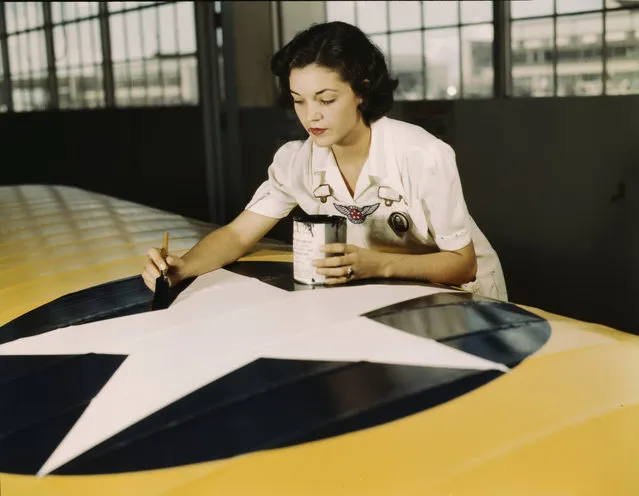
Painting the American insignia on airplane wings is a job that Mrs. Irma Lee McElroy, a former office worker, does with precision and patriotic zeal. Mrs. McElroy is a civil service employee at the Naval Air Base, Corpus Christi, Texas in August 1942. Her husband is a flight instructor. (Howard R. Hollem/U.S. Office of War Information/Library of Congress)
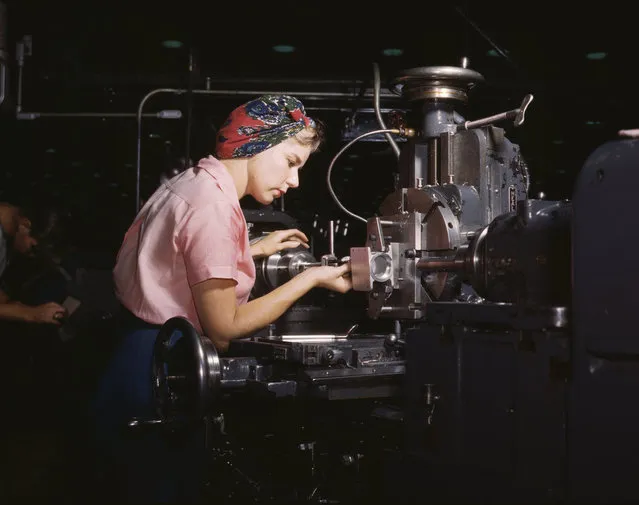
Women become skilled shop technicians after careful training in the school at the Douglas Aircraft Company plant, Long Beach, Calif. in February 1942. Most important of the many types of aircraft made at this plant are the B-17F ("Flying Fortress") heavy bomber, the A-20 ("Havoc") assault bomber and the C-47 heavy transport plane for the carrying of troops and cargo. (Alfred T. Palmer/U.S. Office of War Information/Library of Congress)
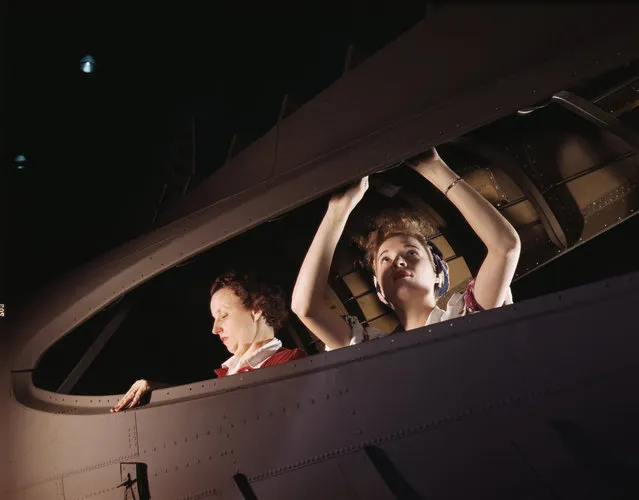
American mothers and sisters, like these women at the Douglas Aircraft Company, give important help in producing dependable planes for their men at the front, Long Beach, Calif. in October 1942. Most important of the many types of aircraft made at this plant are the B-17F ("Flying Fortress") heavy bomber, the A-20 ("Havoc") assault bomber and the C-47 heavy transport plane for the carrying of troops and cargo. (Alfred T. Palmer/U.S. Office of War Information/Library of Congress)
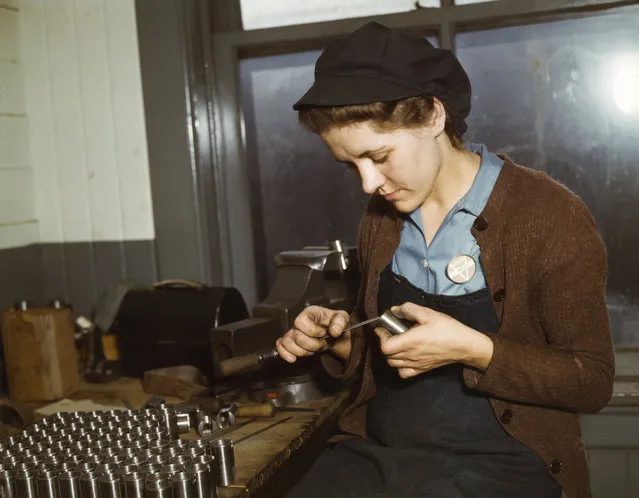
War production workers at the Vilter [Manufacturing] Company making M5 and M7 guns for the U.S. Army, Milwaukee, Wis. in February 1943. Ex-housewife, age 24, filing small parts. Her husband and brother are in the armed service. (Howard R. Hollem/U.S. Office of War Information/Library of Congress)
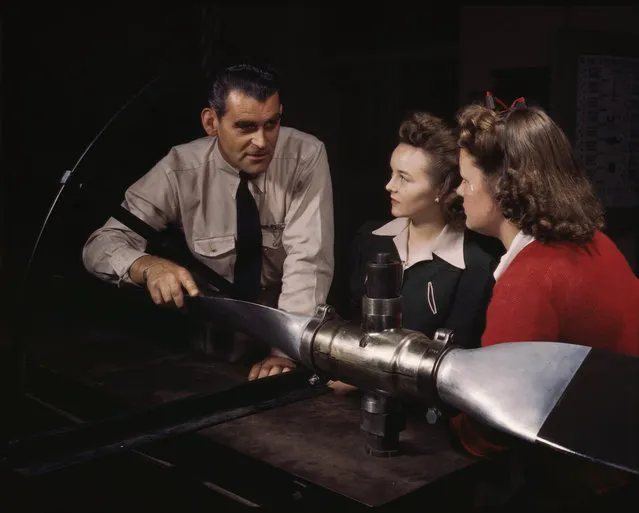
Students at Washington High School at class, training for specific contributions to the war effort, Los Angeles, Calif. Ralph Angar, instructor, explains propeller characteristics to students in the aeronautics class in September 1942. (Alfred T. Palmer/U.S. Office of War Information/Library of Congress)
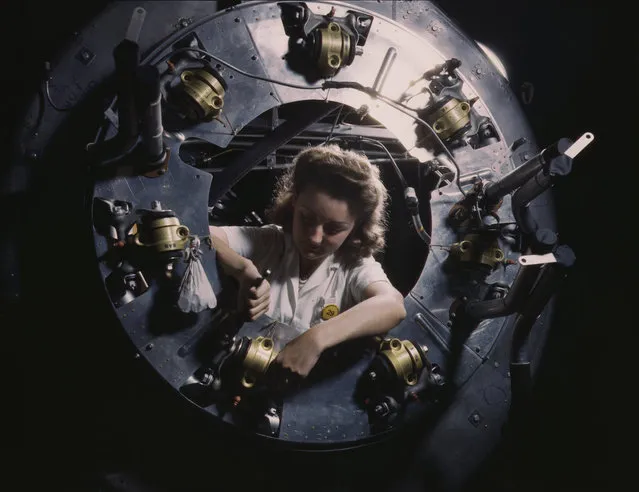
Part of the cowling for one of the motors for a B-25 bomber is assembled in the engine department of North American Aviation, Inc.'s Inglewood, Calif., plant in October 1942. (Alfred T. Palmer/U.S. Office of War Information/Library of Congress)
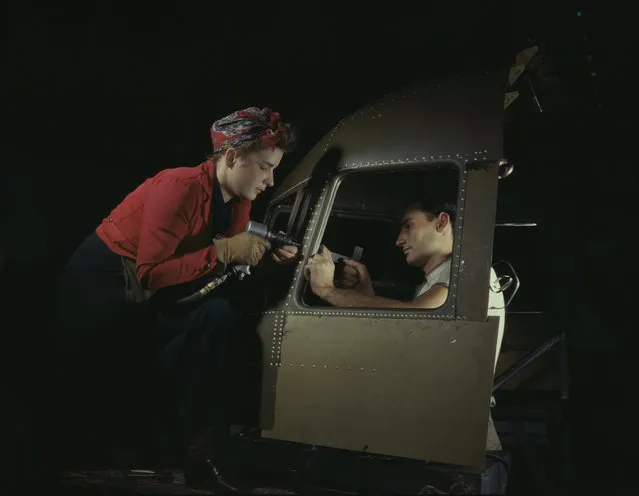
Men and women make efficient operating teams on riveting and other jobs at the Douglas Aircraft plant, Long Beach, Calif. in October 1942. Most important of the many types of aircraft made at this plant are the B-17F ("Flying Fortress") heavy bomber, the A-20 ("Havoc") assault bomber and the C-47 heavy transport plane for the carrying of troops and cargo. (Alfred T. Palmer/U.S. Office of War Information/Library of Congress)
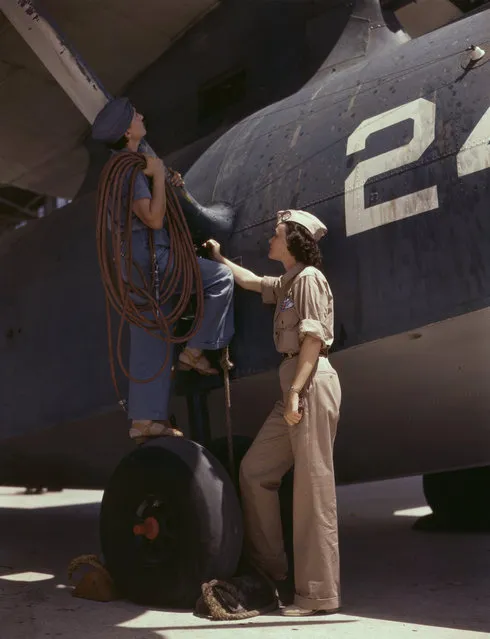
Women are contributing their skills to the nation's needs by keeping our country's planes in top-notch fighting condition, Corpus Christi, Texas in August 1942. Wife of a disabled World War I veteran, Mrs. Cora Ann Bowen (left) works as a cowler at the Naval Air Base. Mrs. Eloise J. Ellis is a senior supervisor in the Assembly and Repairs department. (Howard R. Hollem/U.S. Office of War Information/Library of Congress)
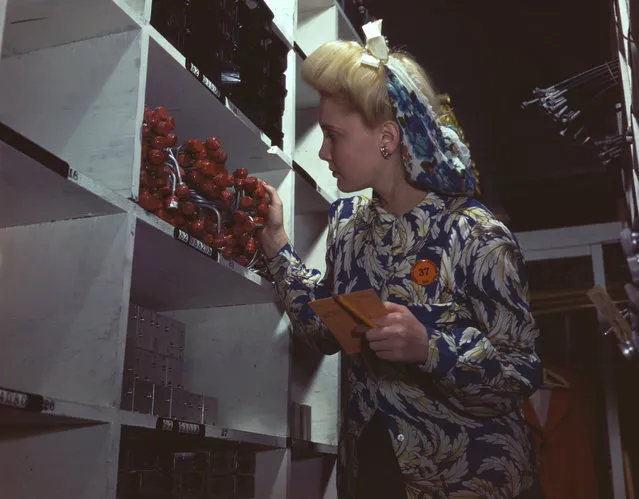
Clerk in one of the stock rooms of North American Aviation, Inc., checking to see if the proper numbers of parts were received and placed in the proper bin, Inglewood, Calif. in October 1942. This plant produces the battle-tested B-25 ("Billy Mitchell") bomber, used in General Doolittle's raid on Tokyo, and the P-51 ("Mustang") fighter plane which was first brought into prominence by the British raid on Dieppe. (Alfred T. Palmer/U.S. Office of War Information/Library of Congress)
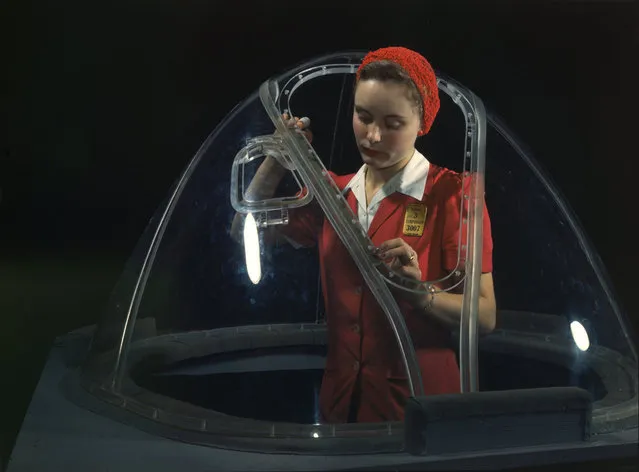
This girl in a glass house is putting finishing touches on the bombardier nose section of a B-17F navy bomber, Long Beach, Calif. in October 1942. She's one of many capable women workers in the Douglas Aircraft Company plant. Better known as the "Flying Fortress," the B-17F is a later model of the B-17 which distinguished itself in action in the South Pacific, over Germany and elsewhere. It is a long range, high altitude heavy bomber, with a crew of seven to nine men, and with armament sufficient to defend itself on daylight missions. (Alfred T. Palmer/U.S. Office of War Information/Library of Congress)
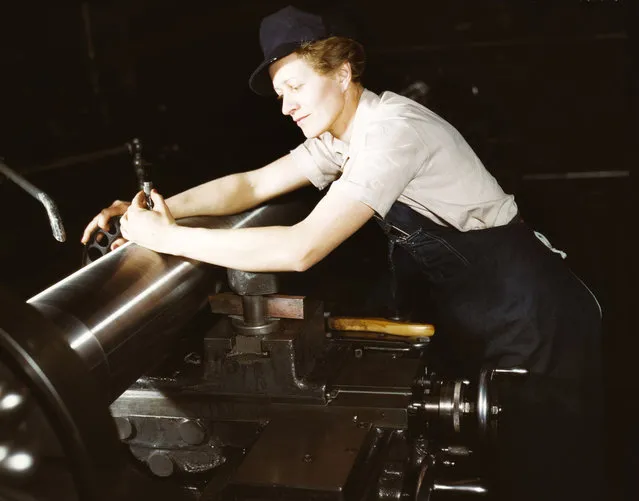
War production workers at the Vilter [Manufacturing] Company making M5 and M7 guns for the U.S. Army, Milwaukee, Wis. in February 1942. Ex-stage orchestra musician, checking an M7 gun with gage, after turning out on a gun lathe. Her two brothers and husband are in the service. (Howard R. Hollem/U.S. Office of War Information/Library of Congress)
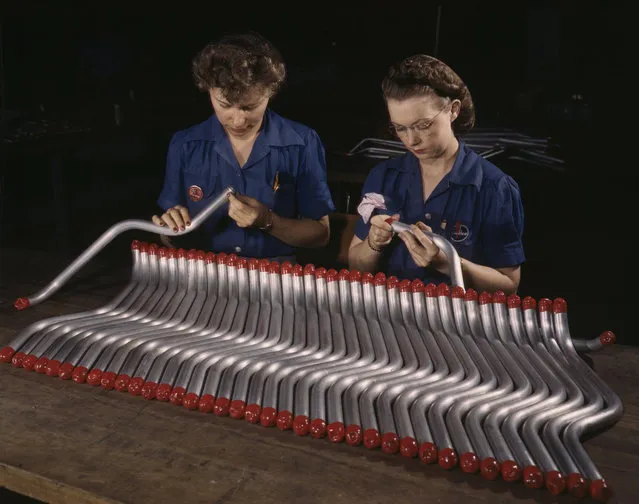
Two women workers are shown capping and inspecting tubing which goes into the manufacture of the "Vengeance" (A-31) dive bomber made at Vultee's Nashville division, Tennessee in February 1943. The "Vengeance" (A-31) was originally designed for the French. It was later adopted by the R.A.F. and still later by the U.S. Army Air Forces. It is a single-engine, low-wing plane, carrying a crew of two men and having six machine guns of varying calibers. (Alfred T. Palmer/U.S. Office of War Information/Library of Congress)
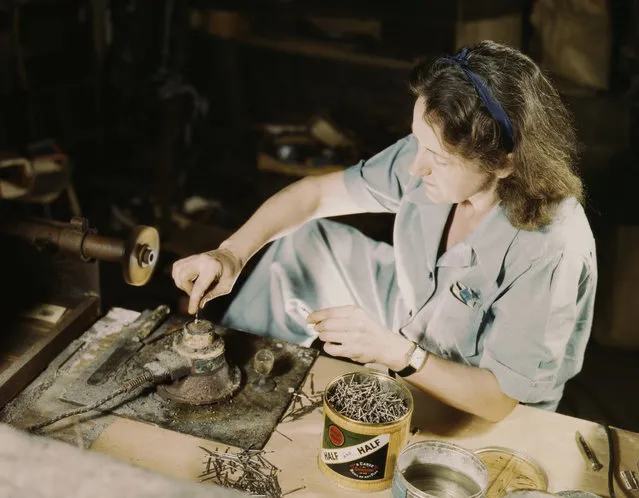
Transfusion donor bottles, Baxter Lab., Glenview, Ill. Formerly a sculptress and designer of tiles, Dorothy Cole converted her basement into a workshop to tin plate needles for valves for blood transfusion bottles prepared by Baxter Laboratories where she lives in October 1942. She turns in her profits to war bonds to provide a college education for her young nephew. (Howard R. Hollem/U.S. Office of War Information/Library of Congress)
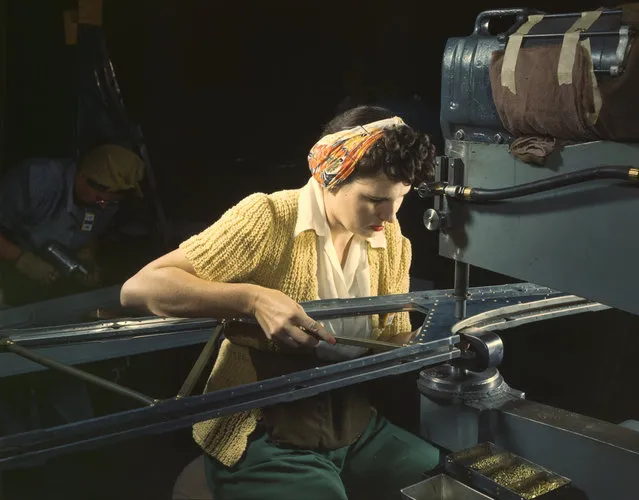
A girl riveting machine operator at the Douglas Aircraft Company plant joins sections of wing ribs to reinforce the inner wing assemblies of B-17F heavy bombers, Long Beach, Calif. in October 1942. Better known as the "Flying Fortress," the B-17F bomber is a later model of the B-17, which distinguished itself in action in the south Pacific, over Germany and elsewhere. It is a long range, high altitude, heavy bomber, with a crew of seven to nine men -- and with armament sufficient to defend itself on daylight missions. (Alfred T. Palmer/U.S. Office of War Information/Library of Congress)
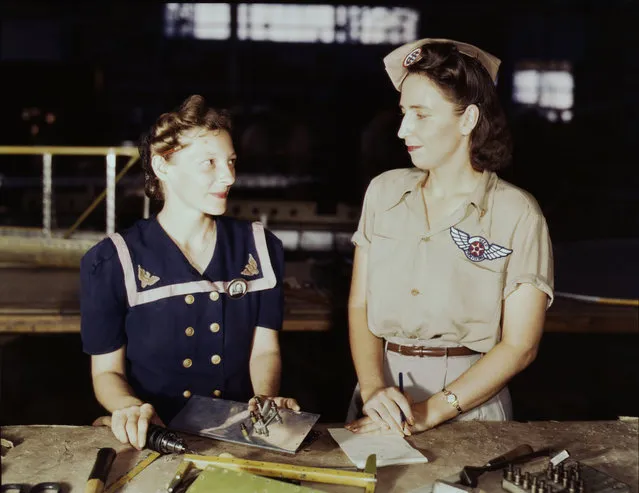
Pearl Harbor widows have gone into war work to carry on the fight with a personal vengeance, Corpus Christi, Texas in August 1942. Mrs. Virginia Young (right) whose husband was one of the first casualties of World War II, is a supervisor in the Assembly and Repairs Department of the Naval Air Base. Her job is to find convenient and comfortable living quarters for women workers from out of the state, like Ethel Mann, who operates an electric drill. (Howard R. Hollem/U.S. Office of War Information/Library of Congress)
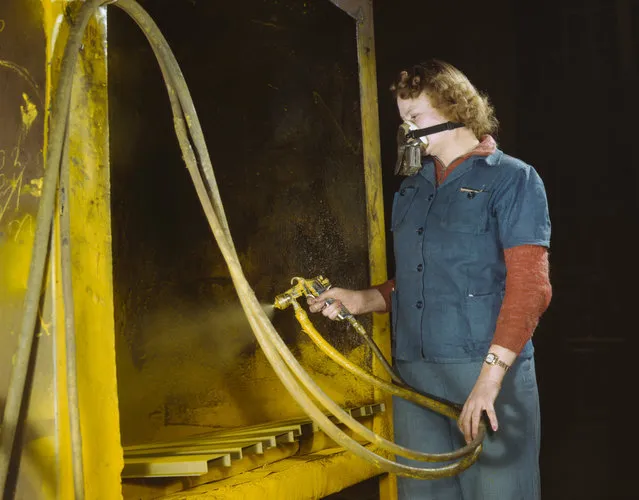
War production workers at the Heil Company making gasoline trailer tanks for the U.S. Army Air Corps, Milwaukee, Wisconsin in February 1943. Elizabeth Little, age 30, the mother of two children, spraying small parts. Her husband runs a farm. (Howard R. Hollem/U.S. Office of War Information/Library of Congress)
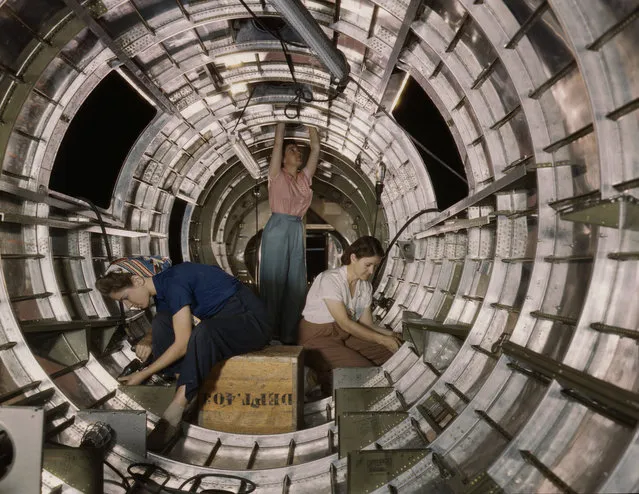
Women workers install fixtures and assemblies to a tail fuselage section of a B-17F bomber at the Douglas Aircraft Company, Long Beach, Calif. in October 1942. Better known as the "Flying Fortress," the B-17F is a later model of the B-17 which distinguished itself in action in the South Pacific, over Germany and elsewhere. It is a long range, high altitude heavy bomber, with a crew of seven to nine men, and with armament sufficient to defend itself on daylight missions. (Alfred T. Palmer/U.S. Office of War Information/Library of Congress)
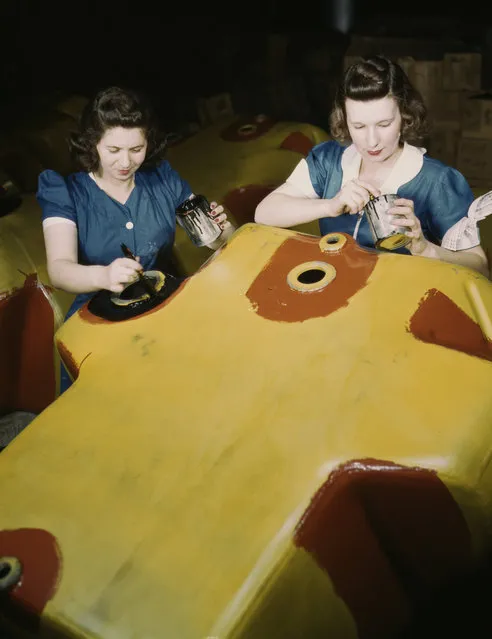
Women war workers, circa 1942. (Alfred T. Palmer/U.S. Office of War Information/Library of Congress)
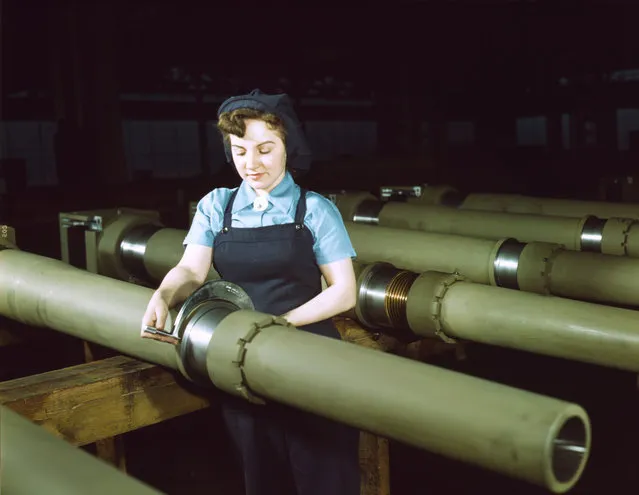
Gist inspector, Mrs. Mary Betchner inspecting one of the 25 cutters for burrs before inserting it in the inside of a 105mm. howitzer at the Milwaukee, Wis. plant of the Chain Belt Co. in February 1943. Her son is in the army; her husband is in war work.(Howard R. Hollem/U.S. Office of War Information/Library of Congress)
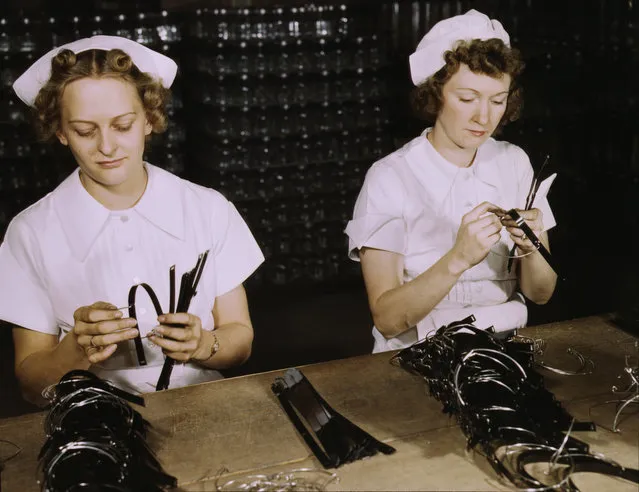
Two Navy wives, Eva Herzberg and Elve Burnham, entered war work after their husbands joined the service, Glenview, Ill. in October 1942. They assemble bands for blood transfusion bottles at Baxter Laboratories. Mrs. Burnham is the mother of two children. (Howard R. Hollem/U.S. Office of War Information/Library of Congress)
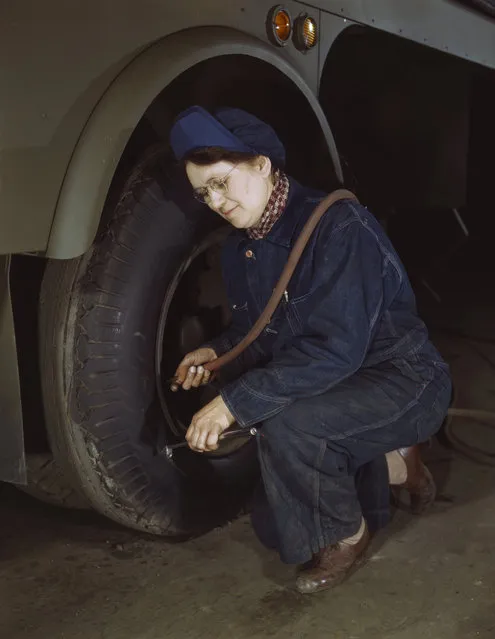
War production workers at the Heil Company making gasoline trailer tanks for the U.S. Army Air Corps., Milwaukee, Wisconsin in February 1943. Mrs. Angeline Kwint, age 45, an ex-housewife, checking the tires of trailers. Her husband and son are in the U.S. Army. (Howard R. Hollem/U.S. Office of War Information/Library of Congress)
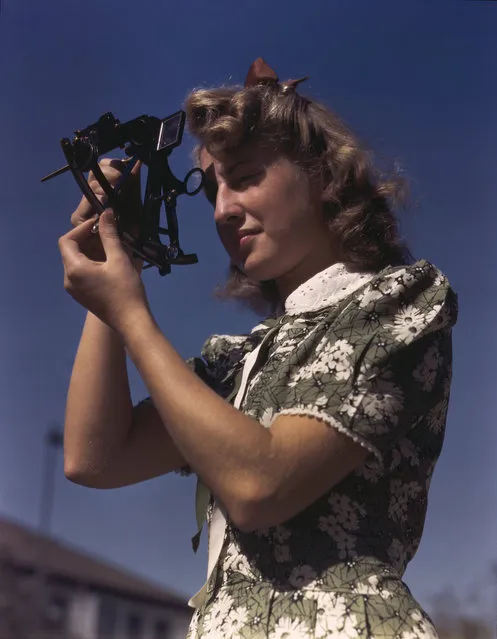
Learning how to determine latitude by using a sextant is Senta Osoling, student at Polytechnic High School, Los Angeles, Calif. in September 1942. Navigation classes are part of the school's program for training its students for specific contributions to the war effort. (Alfred T. Palmer/U.S. Office of War Information/Library of Congress)
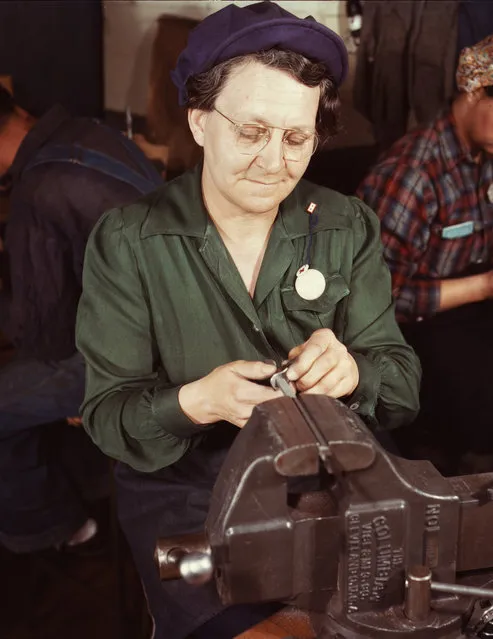
War production worker at the Vilter Manufacturing Company making M5 and M7 guns for the U.S. Army, Milwaukee, Wis. in February 1932. Ex-housewife, age 49, now doing bench work on small gun parts. Son is Second Lieutenant, Son-in-law, Captain in Army. (Howard R. Hollem/U.S. Office of War Information/Library of Congress)
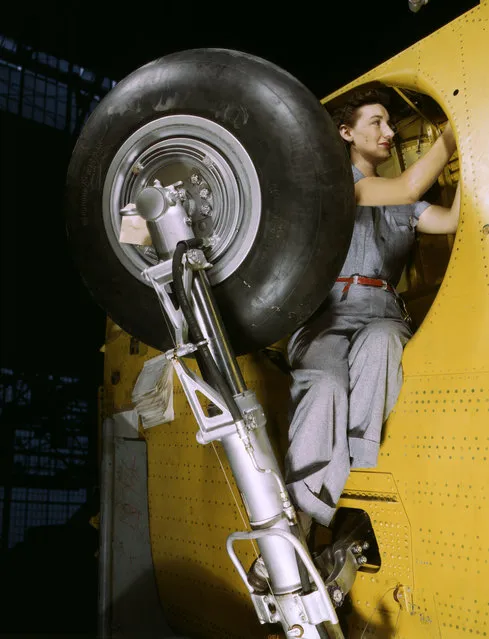
This woman worker at the Vultee-Nashville is shown making final adjustments in the wheel well of an inner wing before the installation of the landing gear, Nashville, Tenn. in February 1943. This is one of the numerous assembly operations in connection with the mass production of Vultee "Vengeance" dive bombers. (Alfred T. Palmer/U.S. Office of War Information/Library of Congress)
18 Aug 2013 13:26:00,
post received
0 comments
